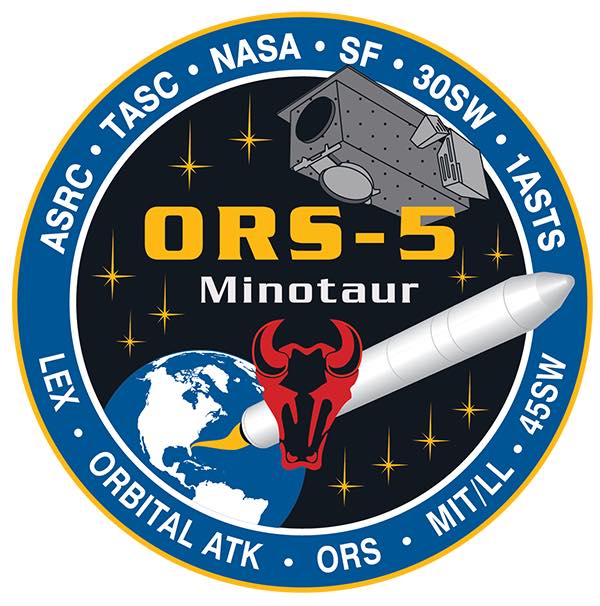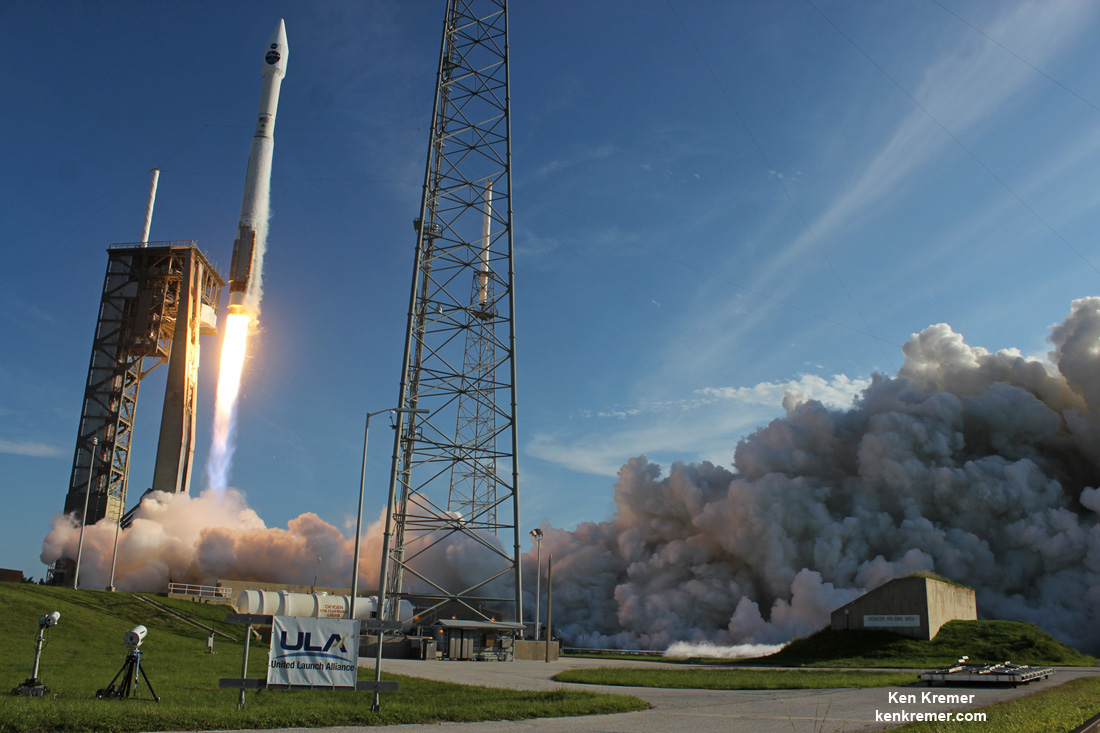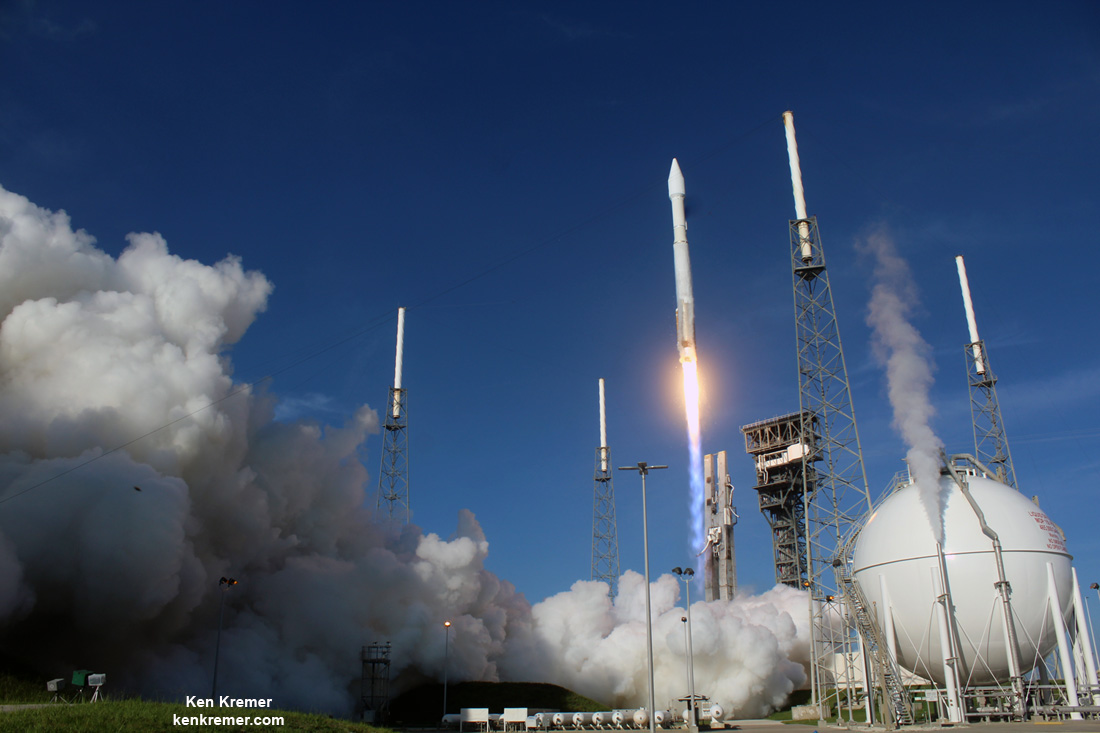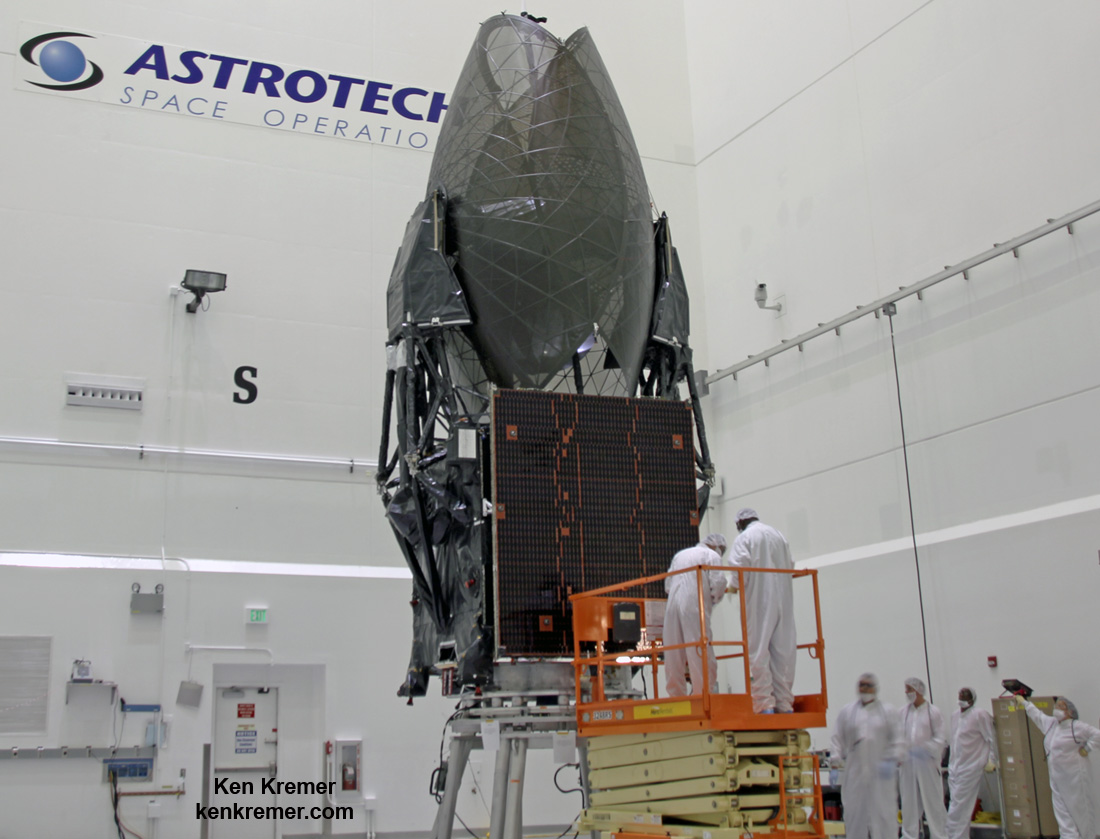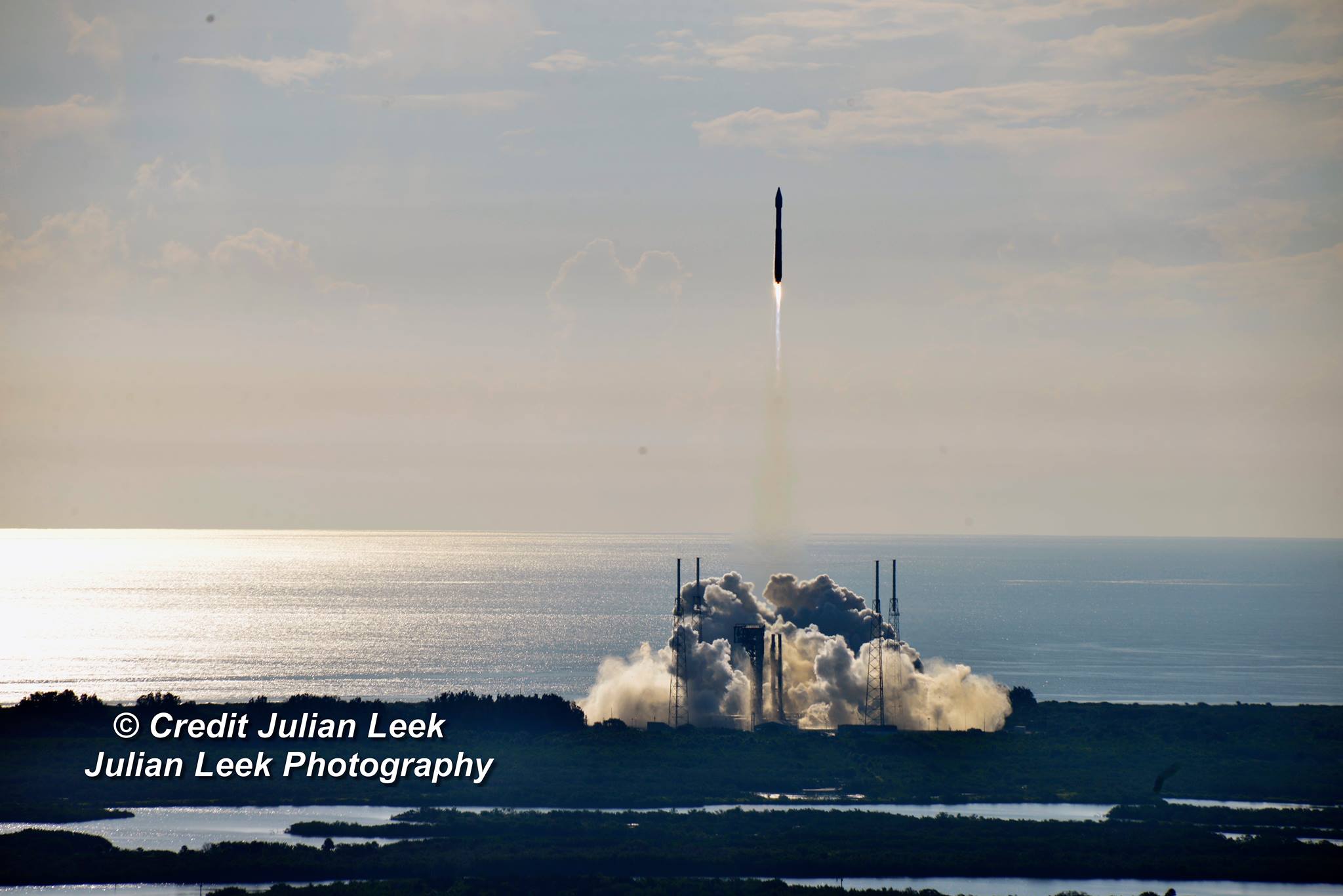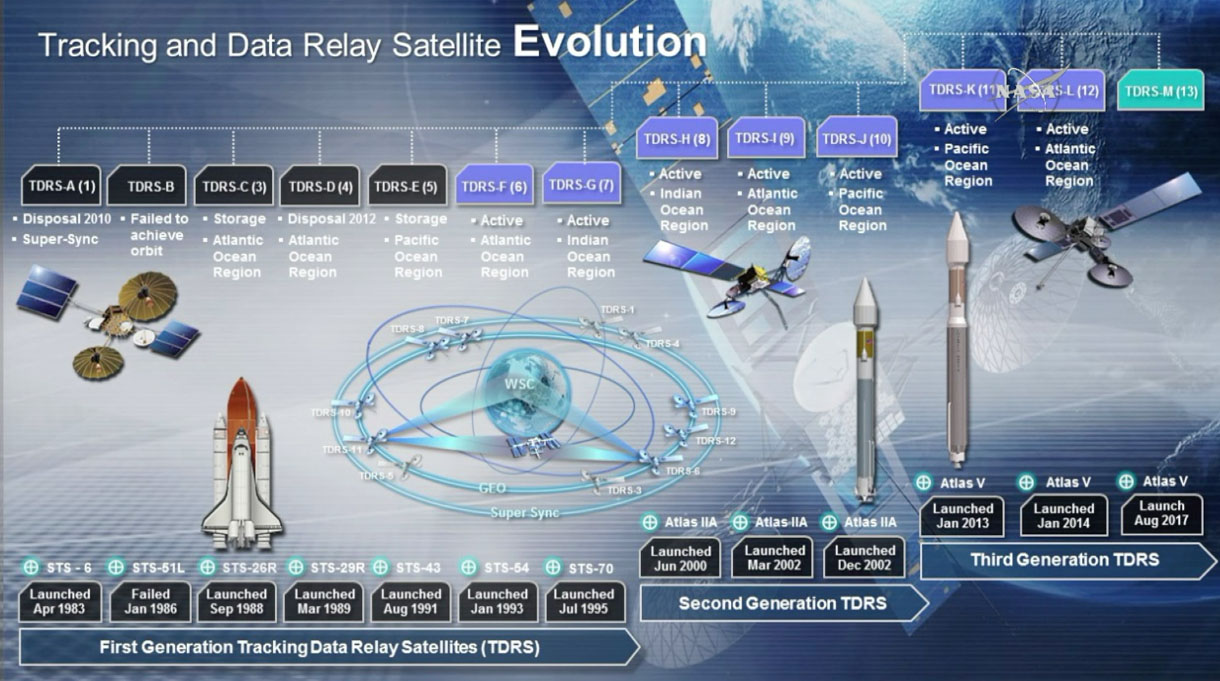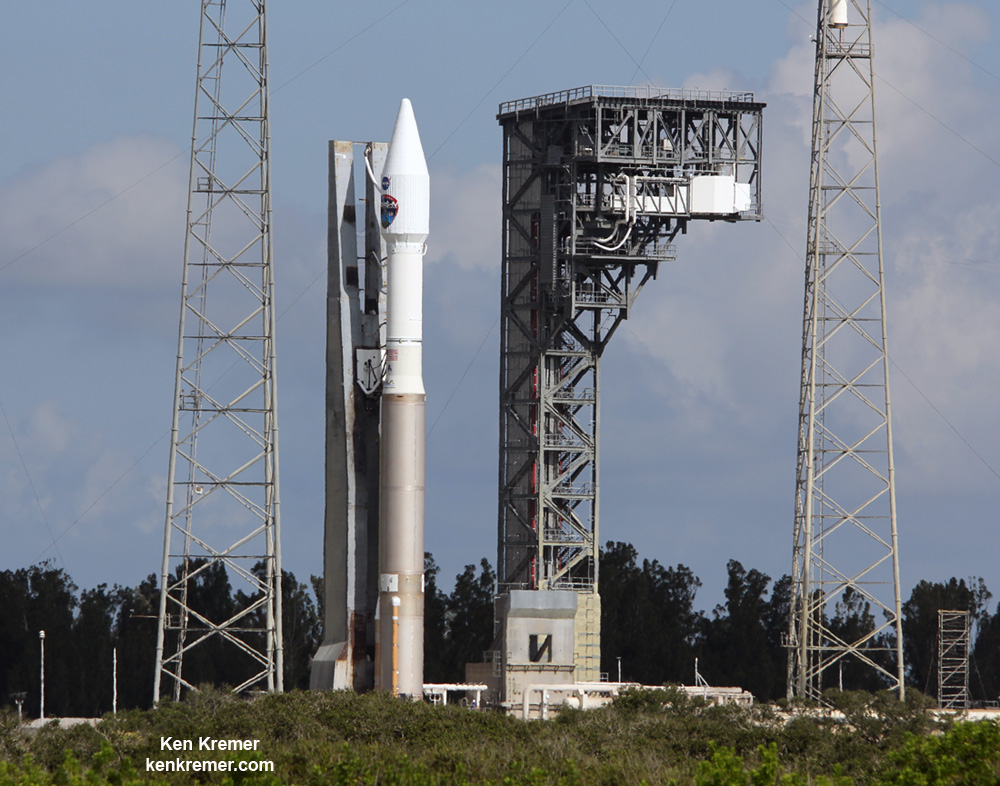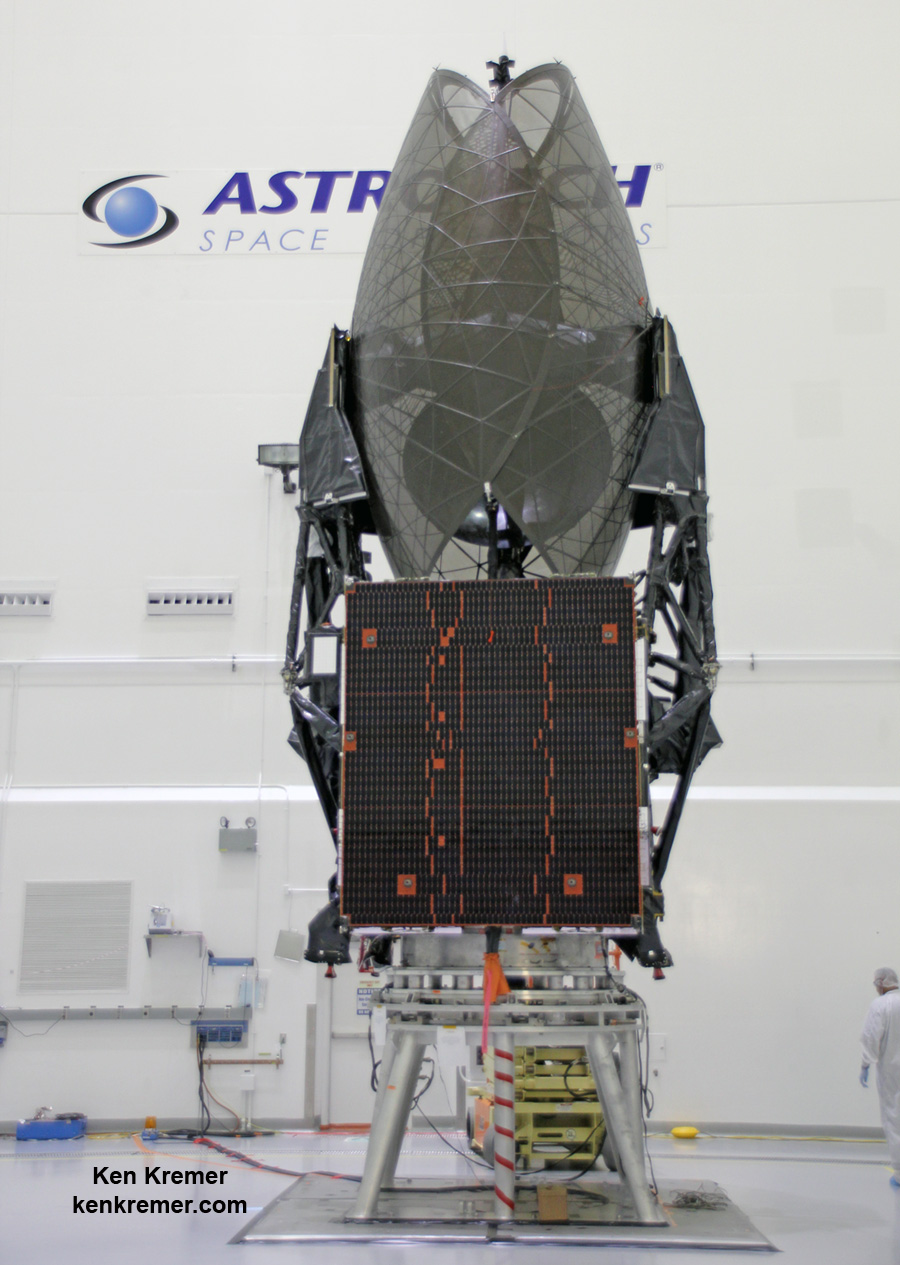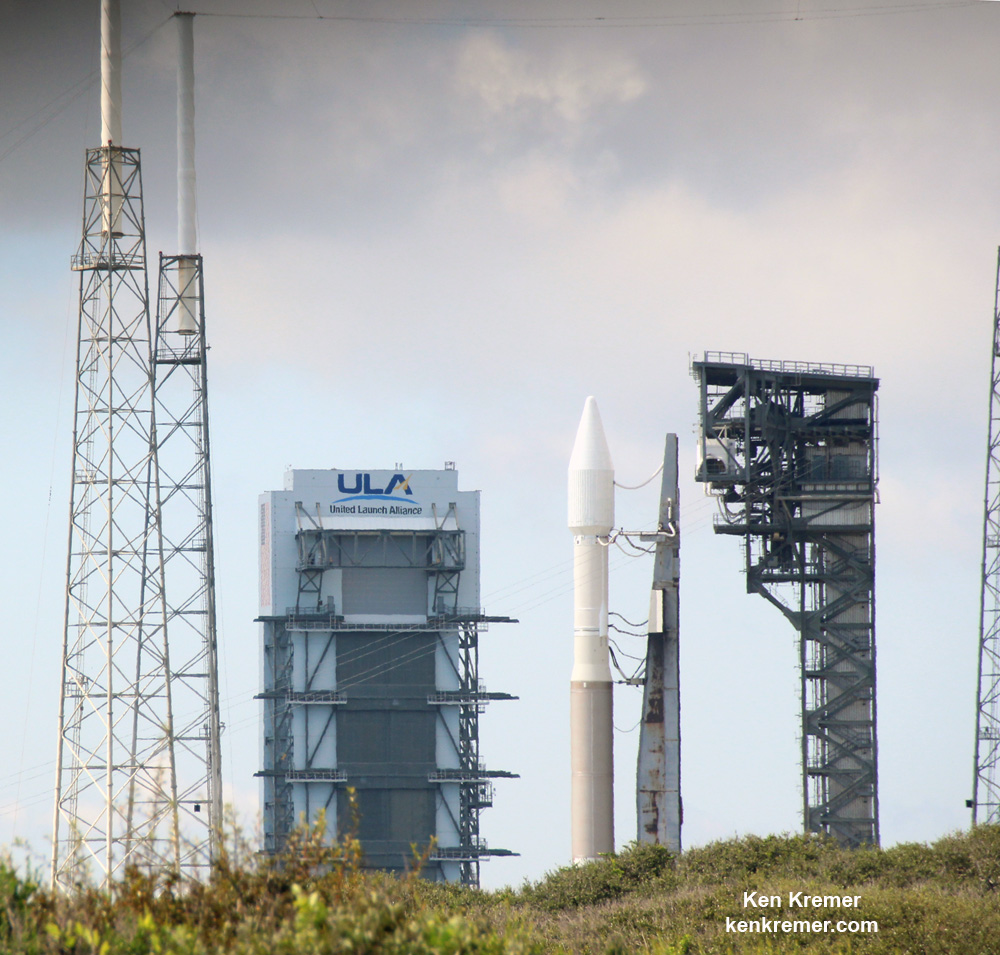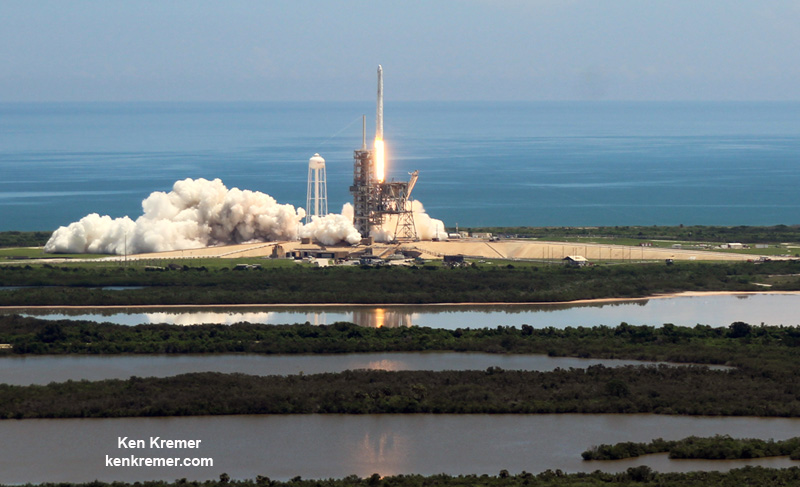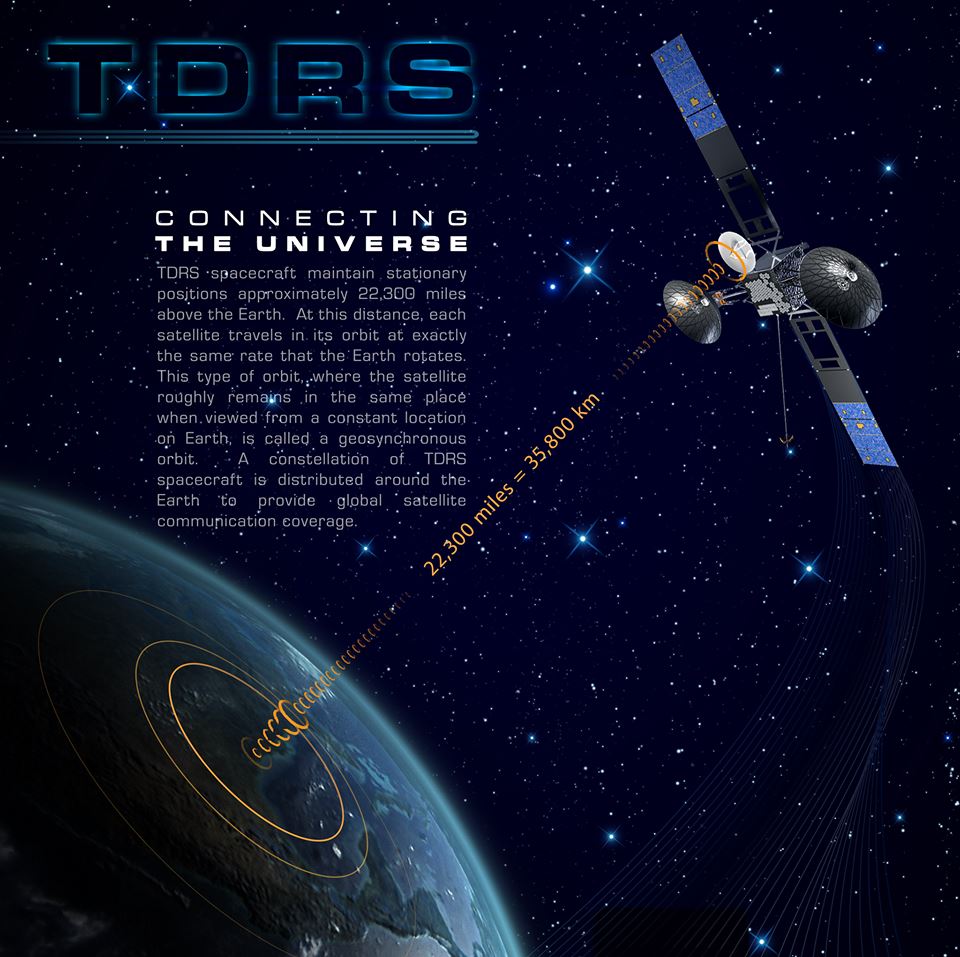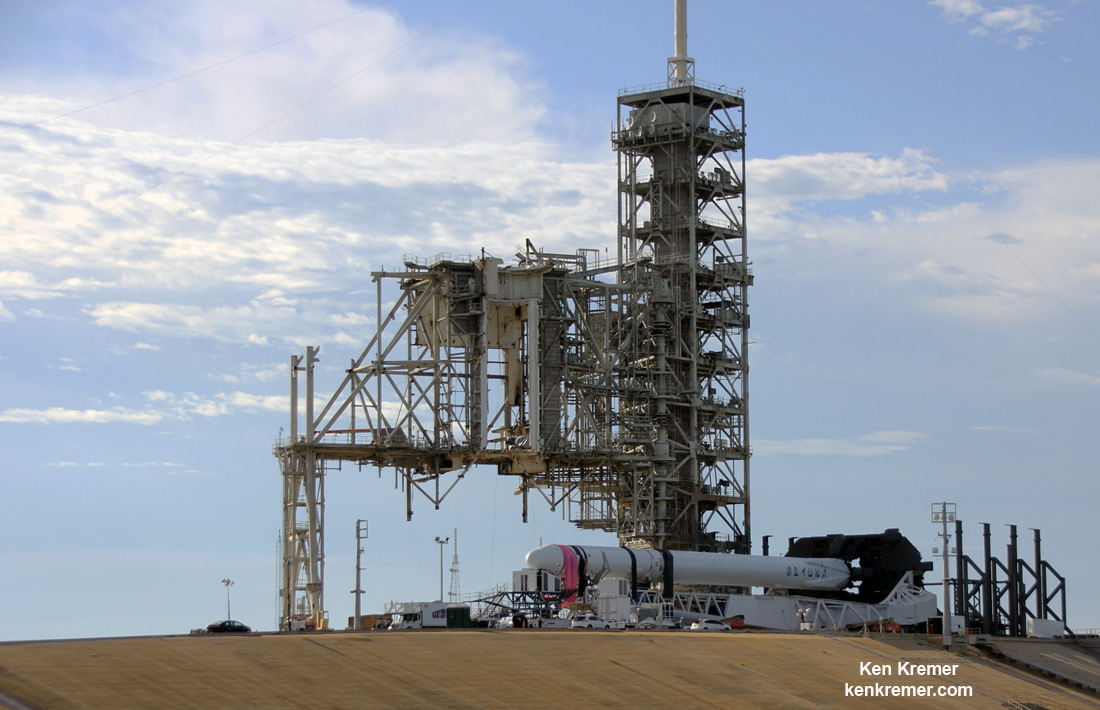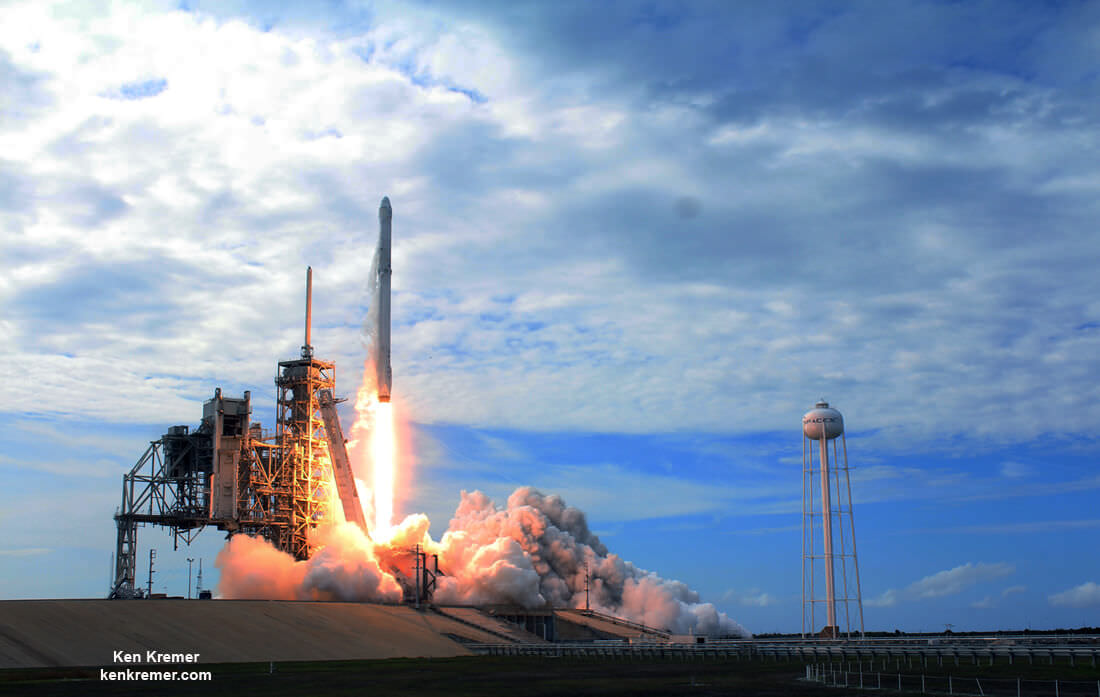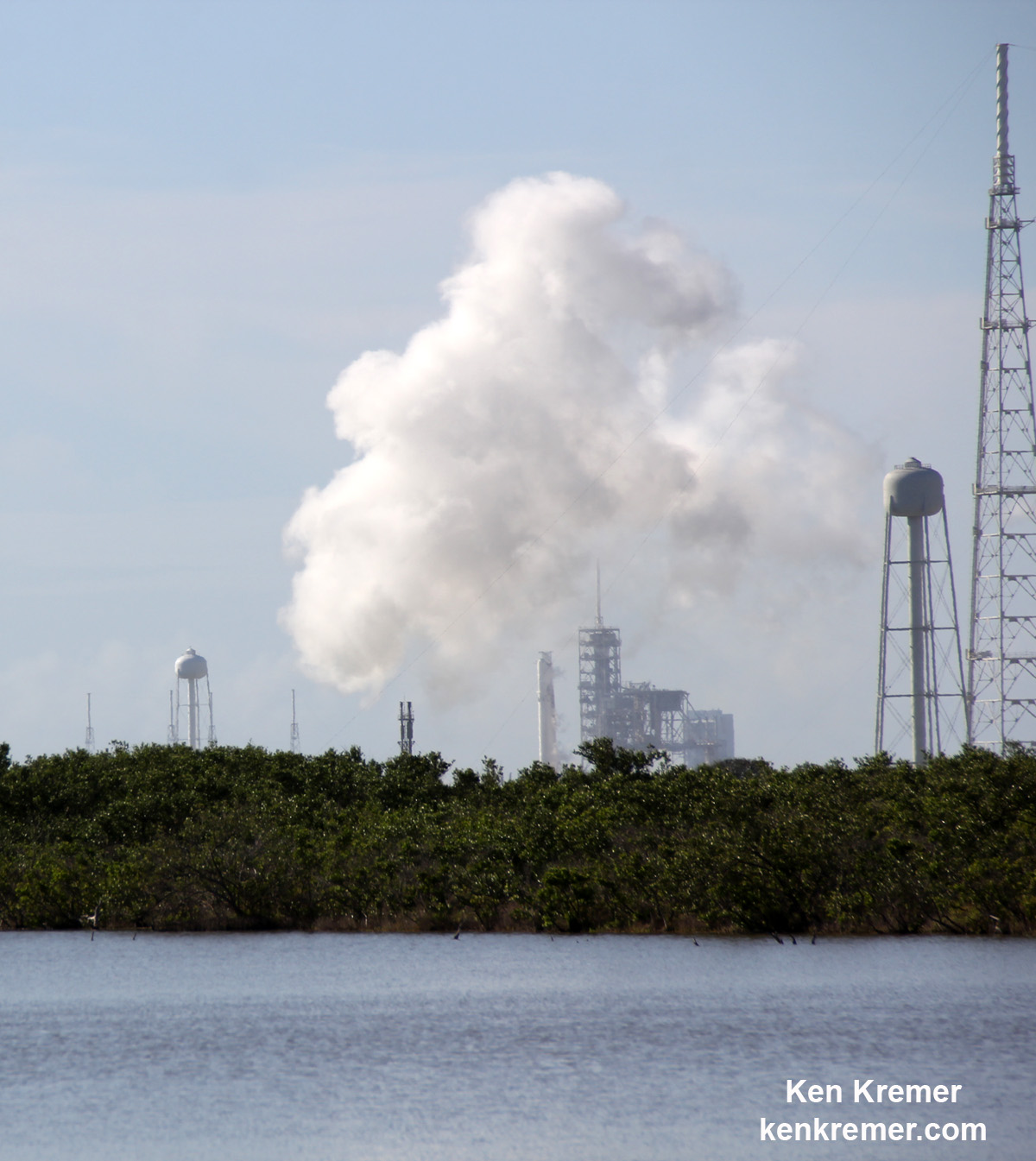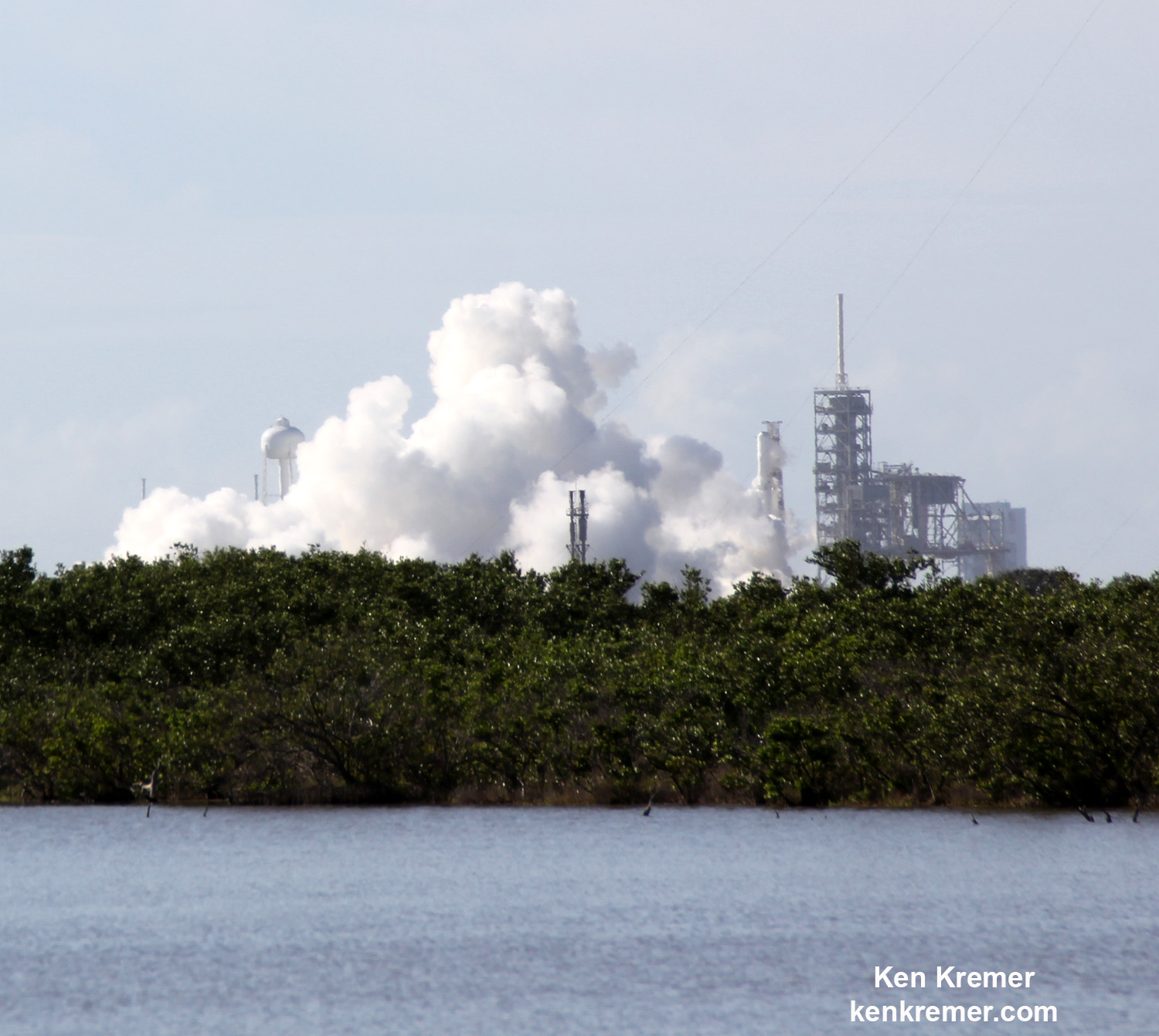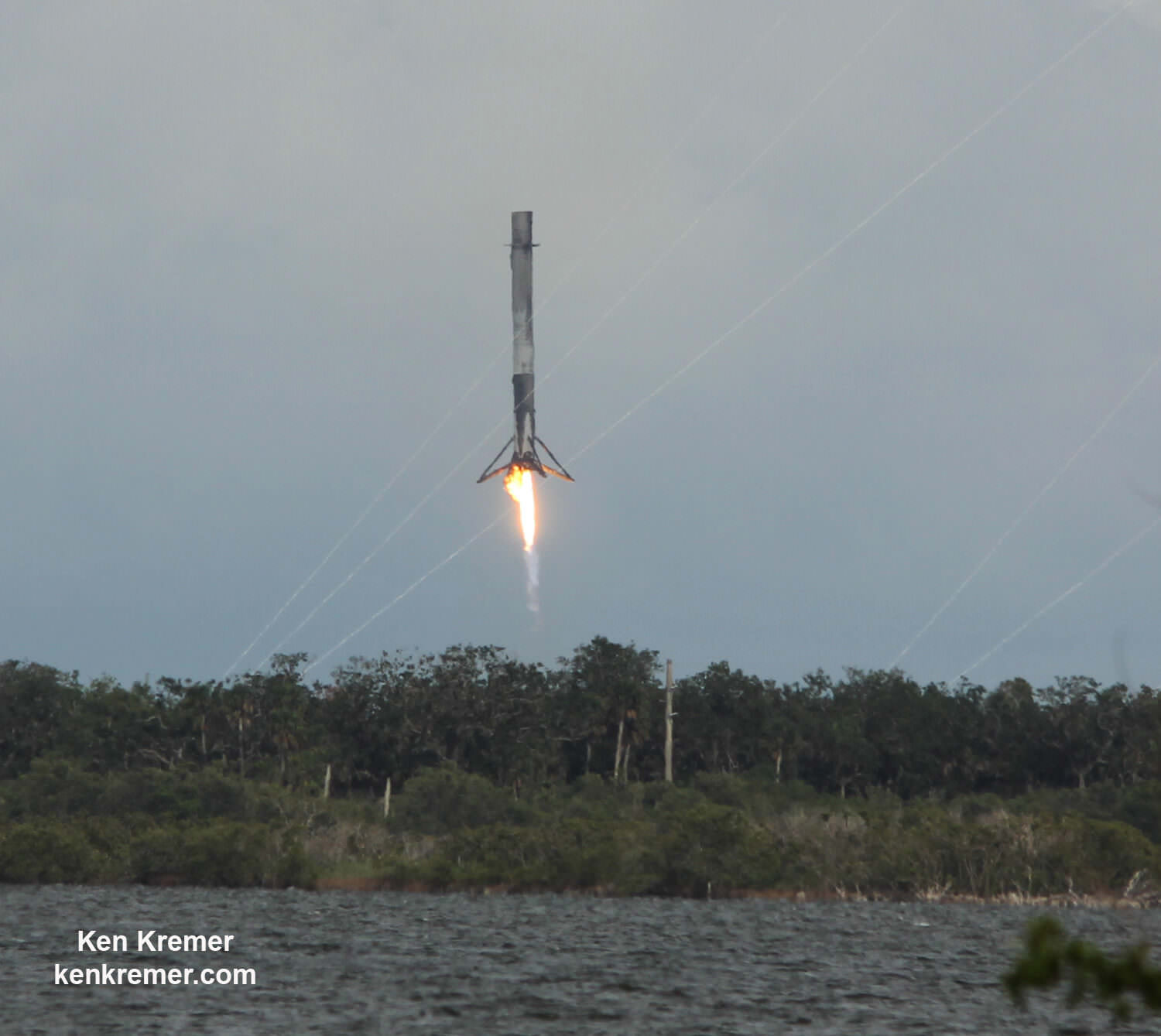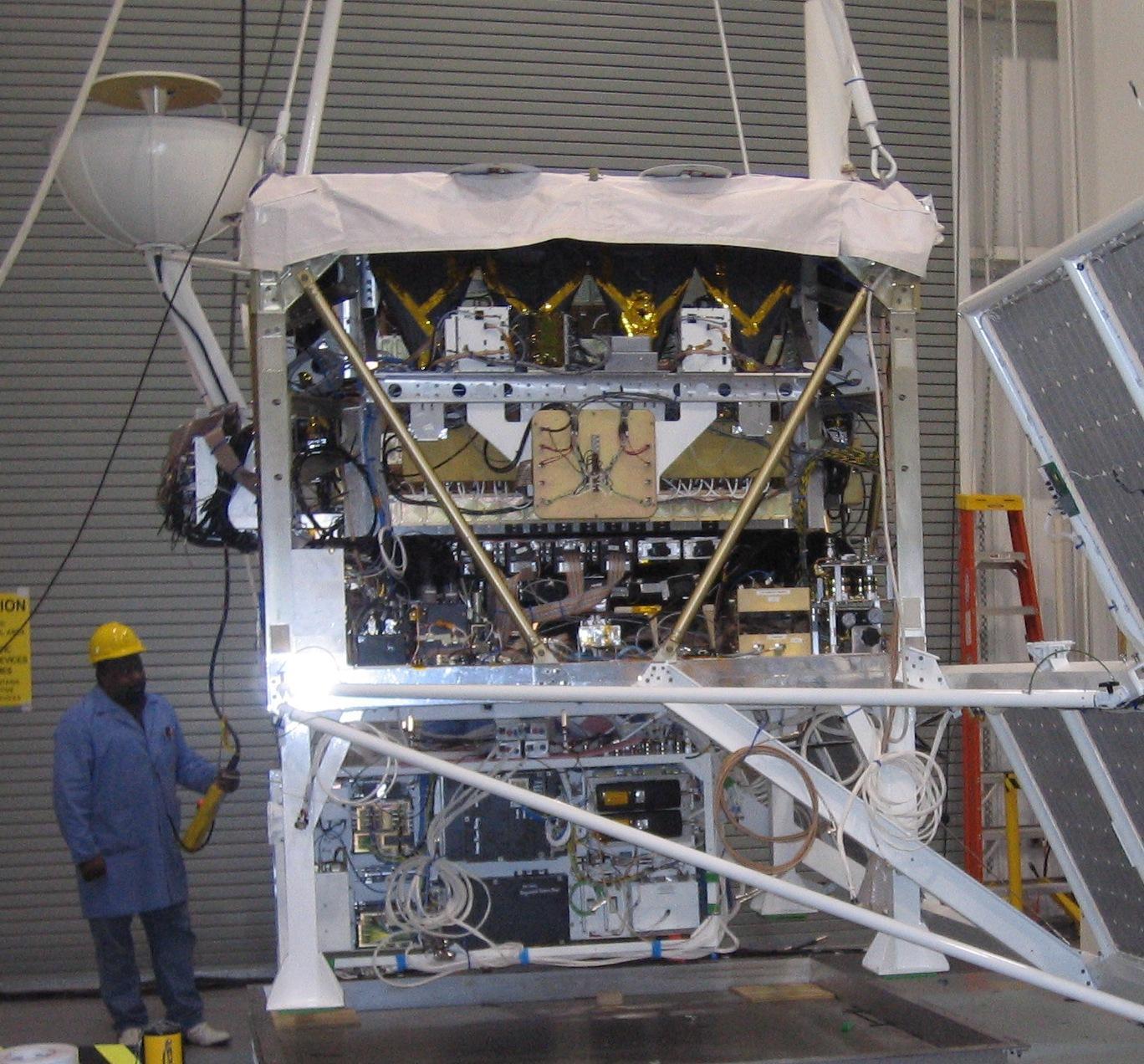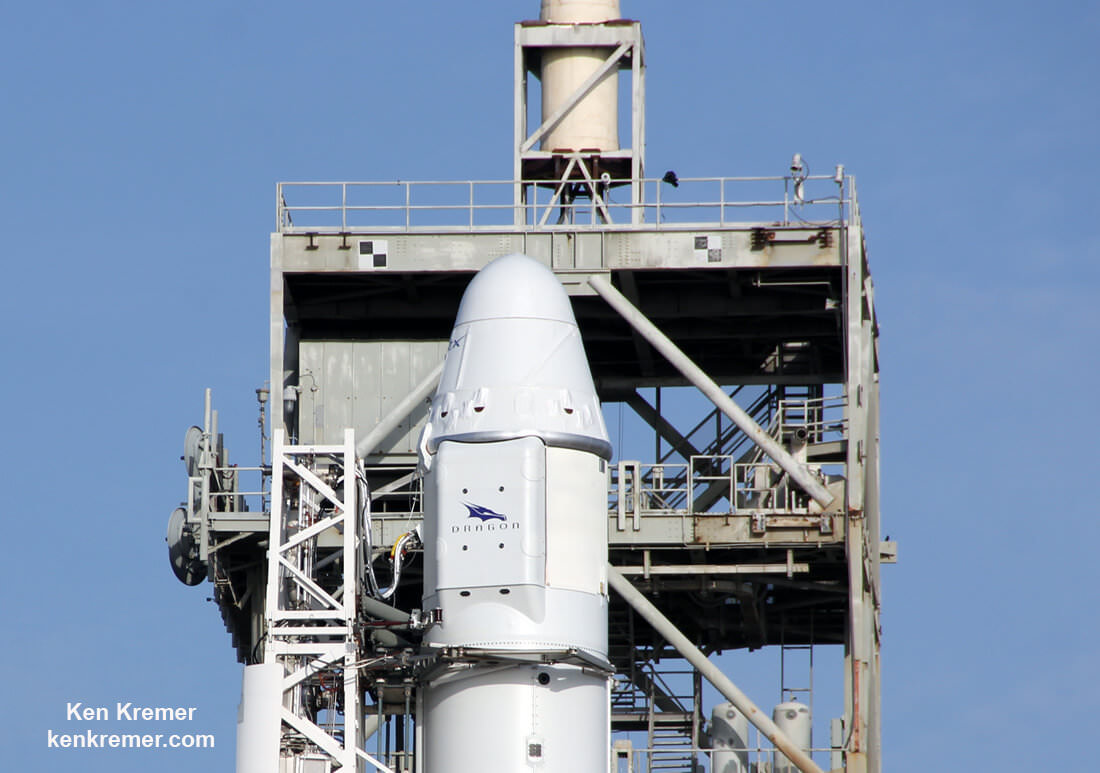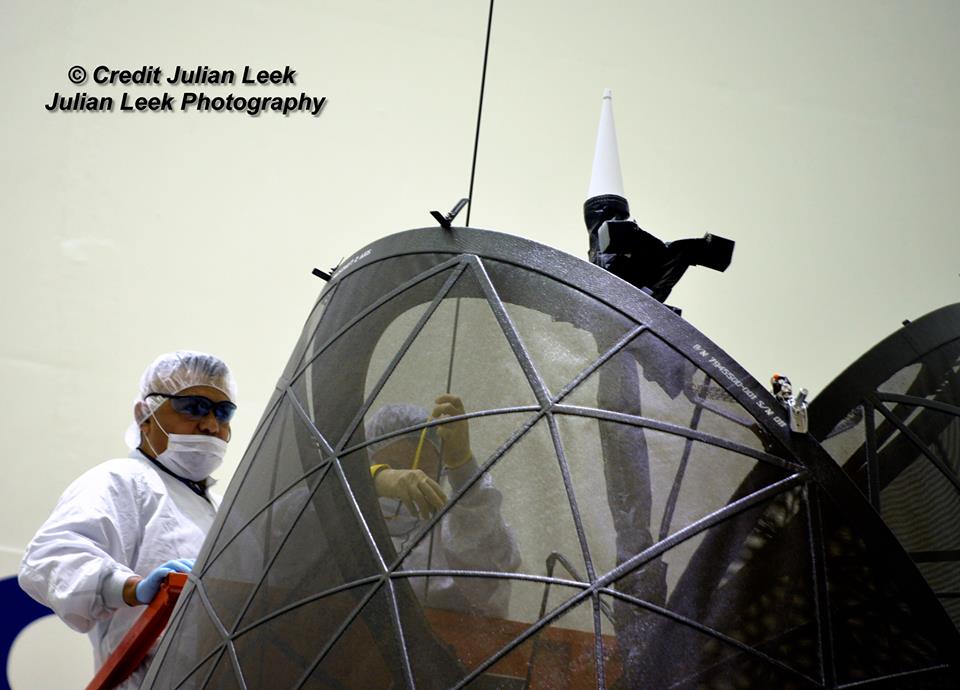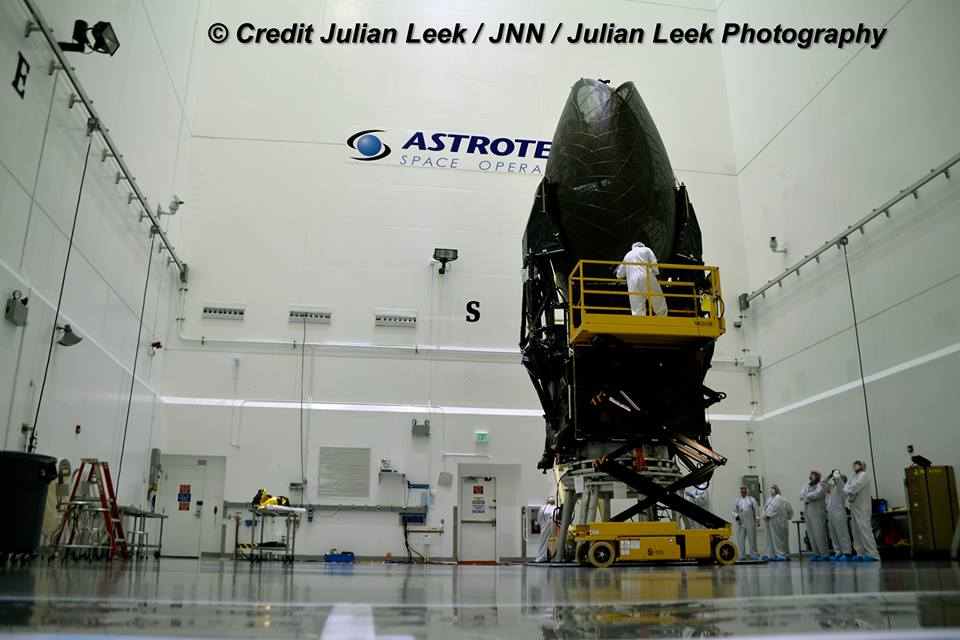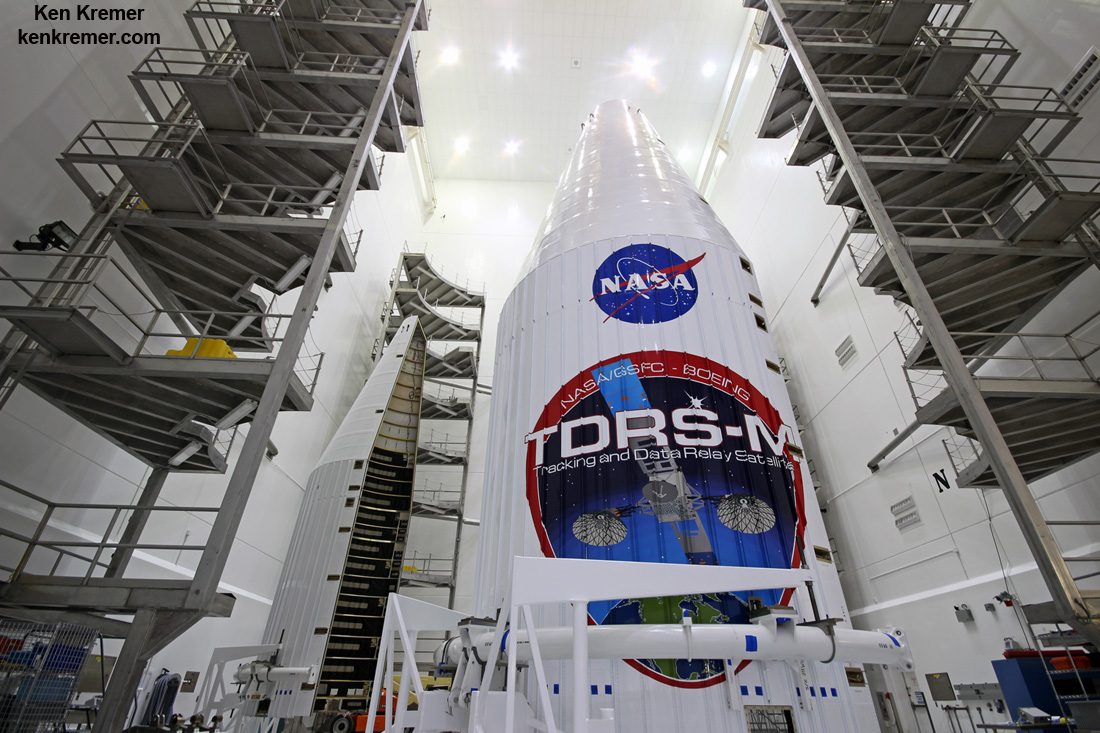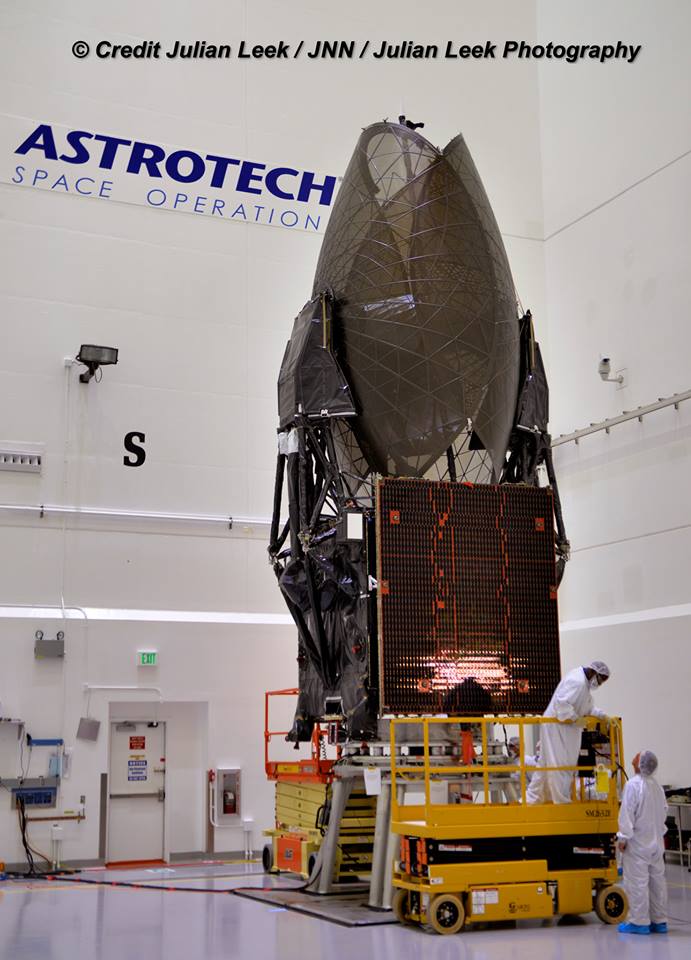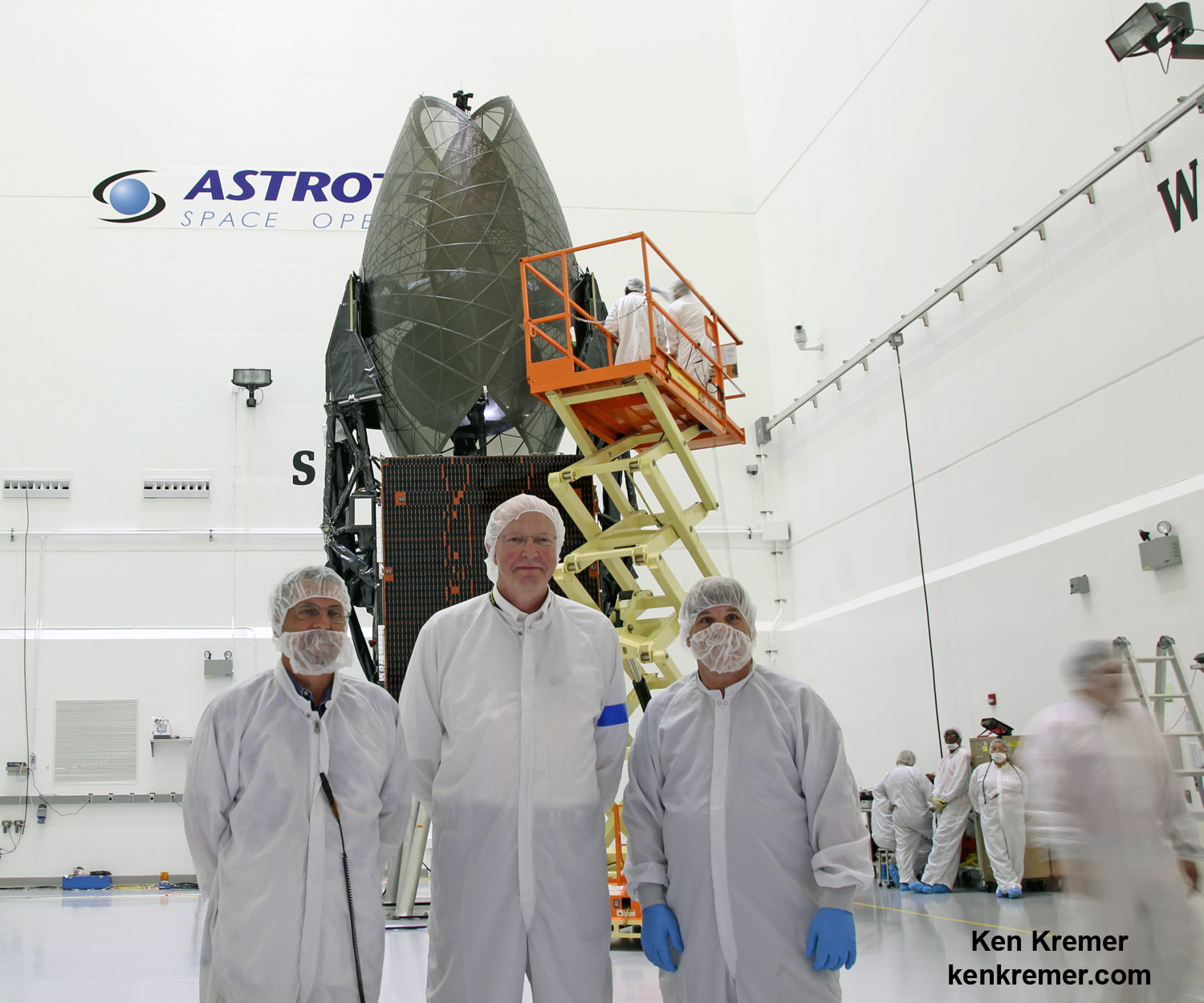
CAPE CANAVERAL AIR FORCE STATION, FL — A gap filling space surveillance satellite that will track orbiting threats for the U.S. Air Force is set for an thrilling nighttime blastoff Friday, Aug. 25 on the maiden mission of the Minotaur IV rocket from Cape Canaveral that’s powered by a retired Cold War-era ICBM missile – once armed with nuclear warheads.
The ORS-5 satellite will provide the US military with space-based surveillance and tracking of other satellites both friend and foe as well as space debris in geosynchronous orbit, 22,236 miles above the equator.
The Orbital ATK Minotaur IV rocket carrying the ORS-5 tracking satellite for the USAF Operationally Responsive Space Office is targeting liftoff just before midnight Friday at 11:15 p.m. EDT from Space Launch Complex-46 (SLC-46) at Cape Canaveral Air Force Station.
“We are go for launch of Orbital ATK’s Minotaur IV rocket Friday night,” Orbital ATK confirmed.
The ORS-5 mission, which stands for Operationally Responsive Space-5, marks the first launch of a Minotaur IV rocket from Cape Canaveral and the first use of SLC-46 since 1999.
The Minotaur IV is a five stage rocket comprised of three stages of a decommissioned Cold War-era Peacekeeper Intercontinental Ballistic Missile (ICBM) that has been modified to add two additional Orbital ATK Orion 38 solid rocket motors for the upper stages.
Being a night launch and the first of its kind will surely make for a spectacular sky show.
Plus if you want to see how the world could potentially end in nuclear catastrophy, come watch the near midnight launch of the Orbital ATK Minotaur IV rocket that’s a retired Peacekeeper ICBM once armed with nuclear warheads aimed at the Russians but now carrying the USAF ORS-5 surveillance satellite instead.
Its well worth your time if you can watch the Minotaur launch with your own eyeballs. It can be easily viewed from numerous local area beaches, parks, restaurants and more.

Furthermore, its been in a super busy time at the Kennedy Space Center and Cape Canaveral. Because, if all goes well Friday’s midnight launch will be the third in just 11 days – and the second in a week!
A ULA Atlas V launched the NASA TDRS-M science relay satellite last Friday, Aug 18. And a SpaceX Falcon 9 launched the Dragon CRS-12 cargo resupply mission to the International Space Station (ISS) on Monday, Aug. 14.
You can watch the launch live via the Orbital ATK website here: www.orbitalatk.com
The live Orbital ATK broadcast will begin approximately 20 minutes before the launch window opens.
The webcast will be hosted by former CNN space reporter John Zarrella.
The launch window opens at 11:15 p.m. EDT August 25. It extends for four hours until 3:15 a.m. EDT August 26.
In the event of delay for any reason, the next launch opportunity is Saturday, Aug. 26. The launch window remains the same from 11:15 p.m. EDT August 26 to 3:15 a.m. EDT August 27.
The weather looks somewhat iffy at this time with only a 60% chance of favorable conditions at launch time according to U.S. Air Force meteorologists with the 45th Space Wing Weather Squadron at Patrick Air Force Base. The primary concerns on Aug. 25 are for thick clouds and cumulus clouds.
The weather odds deteriorate to only 40% favorable for the 24 hour scrub turnaround day on Aug. 26. The primary concerns on Aug. 26 are for thick clouds, cumulus clouds and lightning.
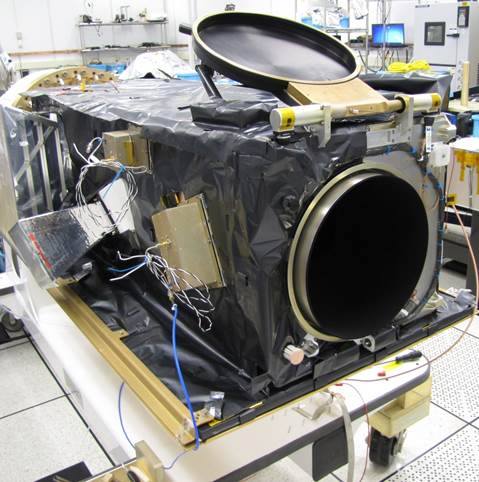
The ORS-5 or SensorSat satellite will provide the US military with space-based surveillance and tracking of other satellites both friend and foe and space debris in geosynchronous orbit 22,236 miles above the equator. Credit: MIT Lincoln Laboratory
ORS-5 is like a telescope wrapped in a satellite that will aim up to seek threats from LEO to GEO.
ORS-5, also known as SensorSat, is designed to scan for other satellites and debris to aid the U.S. military’s tracking of objects in geosynchronous orbit for a minimum of three years and possibly longer if its on boards sensor and satellite systems continue functioning in a useful and productive manner.
“The delivery and upcoming launch of ORS-5 marks a significant milestone in fulfilling our commitment to the space situational awareness mission and U.S. Strategic Command,” said Lt. Gen. John F. Thompson, commander of the Space and Missile Systems Center and Air Force program executive officer for Space. “It’s an important asset for the warfighter and will be employed for at least three years.”
The ORS-5 satellite has a payload mass of 140 kg. It will be launched into a low inclination equatorial orbit of 600 km x 600 km (373 mi x 373 mi) at zero degrees.
“This will be the largest low-Earth orbit inclination plane change in history – 28.5 degrees latitude to equatorial orbit,” says Orbital ATK.
“The Minotaur IV 4th stage will put ORS-5 into initial orbit & the payload insertion stage will make a hard left to get to equatorial orbit.”
The Cape Canaveral AFB launch site for this Minotaur IV was chosen, rather than NASA’s Wallops Flight Facility in Virginia based on the final orbit required for ORS-5, Orbital ATK told Universe Today at a prelaunch media briefing.
The Minotaur IV is not powerful enough to deliver ORS-5 to the desired orbit from Wallops.
ORS-5 was designed and built by Massachusetts Institute of Technology’s Lincoln Laboratory facility in Lexington, Massachusetts at a cost of $49 million.
In July 2015 the U.S. Air Force’s Operationally Responsive Space (ORS) Office awarded Orbital ATK a $23.6 million contract to launch the ORS-5 SensorSat on the Minotaur IV launch vehicle.
ORS-5/SensorSat was processed for launch and encapsulation inside the 2.3 meter diameter payload fairing at Astrotech Space Operations processing facility in Titusville, Florida.
The Minotaur IV is quite similar to Orbital ATK’s Minotaur V launch vehicle which successfully propelled NASA’s LADEE lunar orbiter to the Moon for NASA during a night launch from the agency’s Wallops Flight Facility in Virginia in Sept. 2013.

The Minotaur V also utilizes the first three stages of the decommissioned Peacekeeper ICBM missile.
Overall the ORS-5 launch will be the 26th blastoff in Orbital ATK’s Minotaur family of launch vehicles which enjoy a 100% success rate to date.

The U.S. Air Force has a stockpile of about 180 surplus Peacekeeper motors, but not all are launch capable, the USAF told Universe Today at a prelaunch media briefing.
The USAF furnishes the Peacekeeper motors to Orbital ATK after first refurbishing the booster stages at Vandenberg AFB, Ca.
Orbital ATK then upgrades the stages by adding their own “flight-proven avionics, structures, software and other components that are common among Orbital ATK’s space launch vehicles” and integrating the firms Orion 38 solid rocket motors for the two upper stages.
“A combined government and contractor team of mission partners executed final ground activities including a Launch Base Compatibility Test to verify satellite integrity after shipment, an intersegment test to verify communication compatibility from the satellite to the on-orbit operations center and the final battery reconditioning for launch, prior to its integration with the Minotaur IV launch vehicle,” says the USAF.
Watch for Ken’s continuing onsite Minotaur IV ORS-5, TDRS-M, CRS-12, and NASA and space mission reports direct from the Kennedy Space Center and Cape Canaveral Air Force Station, Florida.
Stay tuned here for Ken’s continuing Earth and Planetary science and human spaceflight news.

………….
Learn more about the 2017 Total Solar Eclipse, upcoming Minotaur IV ORS-5 military launch on Aug. 25, recent ULA Atlas TDRS-M NASA comsat on Aug. 18, 2017 , SpaceX Dragon CRS-12 resupply launch to ISS on Aug. 14, NASA missions and more at Ken’s upcoming outreach events at Kennedy Space Center Quality Inn, Titusville, FL:
Aug 25-26: “2017 Total Solar Eclipse, Minotaur IV ORS-5, TDRS-M NASA comsat, SpaceX CRS-12 resupply launches to the ISS, Intelsat35e, BulgariaSat 1 and NRO Spysat, SLS, Orion, Commercial crew capsules from Boeing and SpaceX , Heroes and Legends at KSCVC, ULA Atlas/John Glenn Cygnus launch to ISS, SBIRS GEO 3 launch, GOES-R weather satellite launch, OSIRIS-Rex, Juno at Jupiter, InSight Mars lander, SpaceX and Orbital ATK cargo missions to the ISS, ULA Delta 4 Heavy spy satellite, Curiosity and Opportunity explore Mars, Pluto and more,” Kennedy Space Center Quality Inn, Titusville, FL, evenings


